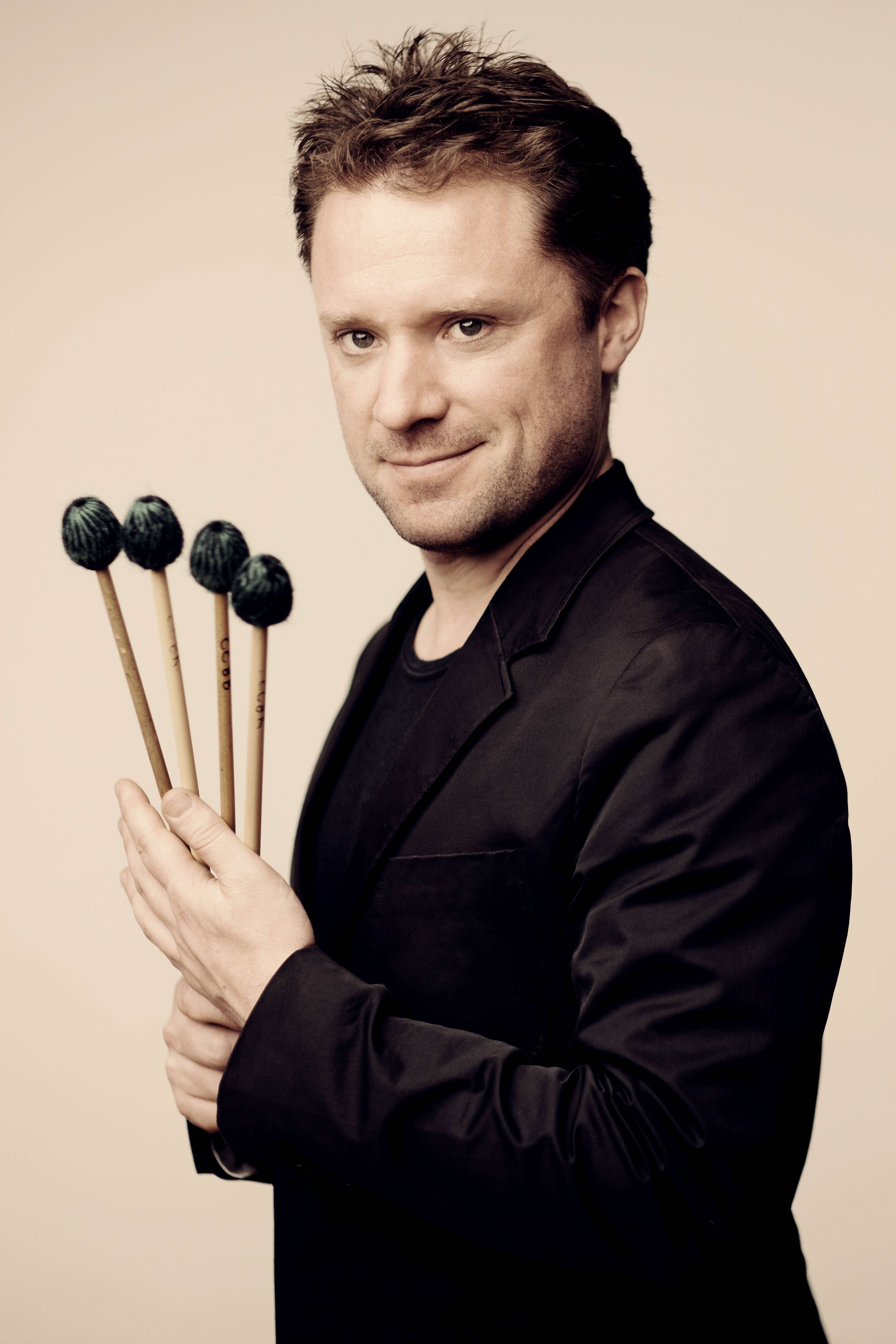|
Back
Hit and Miss Houston
Jones Halle
02/23/2012 - and February 25, 26, 212
Johannes Brahms: Tragic Overture, Op. 81
Einojuhani Rautavaara: Incantations for Percussion and Orchestra
Ludwig van Beethoven: Symphony No. 5 in C Minor, Op. 67
Colin Currie (percussion)
Houston Symphony, John Storgårds (conductor) 
C. Currie (© Marco Borggreve)
I've got some good news and some bad news. The good news is for those of you who think you've heard Beethoven's Fifth Symphony one too many times. In his Houston Symphony debut, John Storgårds conducts a fresh, direct and incisive performance of this warhorse that brings out the best playing from the orchestra. Storgårds' every choice is a correct one, from the simple idea of placing the trumpets beside the timpani to ensure their rhythmically interlocked parts are as precisely executed as possible, to the equal attention he gives to his divided first and second violin sections, again ensuring rhythmic accuracy and pointing up the antiphonal effects between the sections in Beethoven's score.
In addition to these wise logistic decisions, Storgårds' interpretation is convincing throughout. There is no lingering over the opening 'fate' motive. Instead, it is presented as a catapulting gesture, a momentary hesitance before the infectious, unflappable momentum that follows. Rhythms are pointed, strings and brass are allowed to dig in and woodwind solos ooze character, especially oboe in the first movement and piccolo in the finale. Although the earnestness of the piece is not downplayed, Storgårds isn't afraid to have fun in the proper places, and the trio of the third movement in particular is witty and propulsive in its phrasing. With crisp tempos and an incredibly wide dynamic spectrum, the performance hits all the right emotional points, such as the eerie coda of the third movement that is held in check until the last possible moment before the explosion into the finale, where the brass, now bolstered by trombones, produce a rich, perfectly balanced and imposing sound that instantly reminds us how hair-raising this moment must have been in 1808.
At the head of the concert, Storgårds presents a solid reading of Brahms' Tragic Overture. There is bold brass playing, especially from the low horns, and excellent phrasing of the beguiling second theme. It is easy to become bogged down by the preponderance of dotted rhythms in the piece, but conductor and orchestra keep the energy pointing forward throughout.
The bad news is for lovers of new music. Beethoven's Fifth Symphony and Brahms' Tragic Overture are both pinnacles of their respective genres. While a relatively new genre, the percussion concerto already has its pinnacles, such as Joan Tower's Strike Zones and James MacMillan's Veni, Veni, Emmanuel, the latter of which is available on a stunning Naxos recording featuring tonight's soloist, Colin Currie. After Currie's impassioned on-stage discussion of Einojuhani Rautavaara's 2009 contribution to the genre, Incantations, expectations ran high.
Also making his Houston Symphony debut, Currie is an exciting percussionist of the highest caliber. Rautavaara is one of the leading living Finnish composers. The stars should have been in alignment. Unfortunately, Incantations is simply dull. For all the colorful possibilities of the percussionist's arsenal, the composer chooses precious few, and the writing for those lacks imagination. The three-movement work is fixated on a banal opening melody, its perpetual harmonization in seconds making innocuous a dissonance that should produce tension.
In the preface to the score, the composer writes that "...a melodic line is always important to me...", but the melodies in the piece aren't interesting. Especially tiresome is the second movement ("Espressivo"), where the soloist is relegated to the vibraphone, playing homorhythmic two- and four-mallet chords over murmuring string figures, producing meandering harmonic results. Rautavaara also states that he "...wanted to avoid the conventional and monotonous 'shamanism' of some earlier Finnish music..." and reveals that he did so using rhythm. This, too, doesn't come across, as many of the asymmetrical rhythms are grouped into larger, symmetrical units that are made stolid and, indeed, monotonous, by the slow-motion orchestral accompaniment.
To his credit, Colin Currie gives the piece his all, doing his best with the "melodies" and drawing a wide range of timbres from the marimba and vibraphone. His dedication is matched by fine playing from the orchestra and committed direction from the podium. The most interesting moment in the conccerto is the cadenza in the finale. Athletically springing from vibraphone to marimba and virtuosically adding new timbres to the proceedings, Currie finally revels in polyrhythms and multi-sticking, and the listener is left baffled as to why, for two minutes in a 25-minute work, there is suddenly an outburst of idiomatic, imaginatively virtuosic writing. Interesting as it is, the cadenza feels perfunctory, an obligatory apologia for the lack of excitement in the rest of the piece. Unwilling or unable to weave such virtuosity into his accompanimental texture, Rautavaara instead has his work respond structurally to the cadenza by--you guessed it--bringing back "that theme" from the first movement, unchanged, unaffected. The question posed by the cadenza's seeming incongruity is answered by a peak at the score (available for free perusal at the Boosey & Hawkes website), which reveals that Rautavaara had nothing to do with the cadenza and that it was improvised by Currie.
Storgårds' conducting tonight makes one eager for his return, in Brahms, next season. Likewise, one hopes for Currie to return to the Jones Hall stage, but hopefully with repertoire that is more consistently engaging.
Marcus Karl Maroney
|